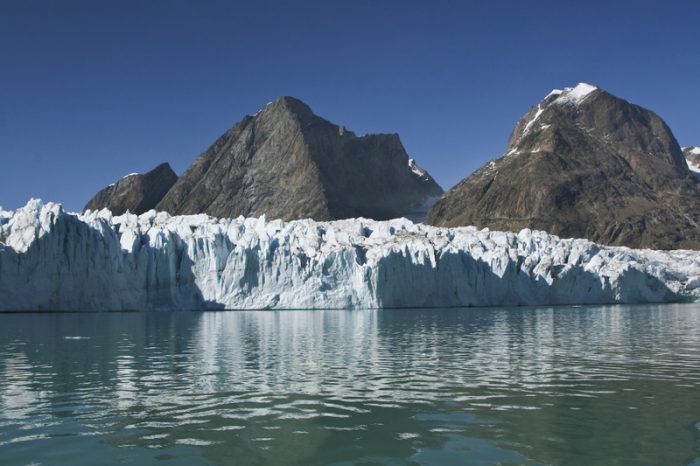Denise Holland is a researcher from New York University who happened to be in the right place at the right time. She and her team were conducting research in Greenland, the huge island to the northeast of Newfoundland and Labrador.
On June 22, they were about to go to sleep for the night by the Helheim glacier when they heard a huge, 5-minute-long "roar". Something big was happening. And thanks to Denise's quick reactions, we get to see just what it was.
An iceberg calving—or breaking off—from a glacier and falling into the sea.
A larger problem
To be clear, this video is a time lapse. In this case, the footage has been sped up to show about 90 minutes worth of real events in around 90 seconds. But either way, this is still something that happened pretty quickly—a 6 km (4 mi) long iceberg suddenly diving into open water.
And that's a concern for the planet.
The state of the world's glaciers and ice caps is a big deal for climate change researchers. The amount of ice in Earth's two polar regions—the Arctic and Antarctic—has been steadily decreasing over the past few decades.
Most concerning is the land ice that is calving into the oceans as icebergs. Because this ice is being added to the water (and not already in it, like sea ice is) it raises global sea levels. Which then brings us back to Greenland—the biggest source of land ice in the Arctic.
Second largest in the world
Researchers are watching the ice melt on the Greenland ice sheet very closely for clues about the effects of climate change. (Getty Embed)
Greenland is nearly entirely covered by a body of ice known as the Greenland ice sheet. This ice sheet is about 1,710,000 square km (660,000 sq mi), which is two-and-a-half times the size of Texas. It is also an average of 2 km (1.2 mi) thick. That is an incredible amount of ice! Understandably, scientists watch this ice sheet closely, which is where today's iceberg video comes from.
"The better we understand what's going on means we can create more accurate simulations to help predict and plan for climate change," Denise told the website Phys.org. Researchers like her are hopeful that this kind of footage can improve scientists' abilities to predict how sheets will react to rising temperatures—as well as make a case for why international agendas like the Paris Agreement are so important.
 The Helheim glacier, where the iceberg was formed, is a part of the Sermilik fjord in southeastern Greenland. (© Gentoomultimedia | Dreamstime.com)
The Helheim glacier, where the iceberg was formed, is a part of the Sermilik fjord in southeastern Greenland. (© Gentoomultimedia | Dreamstime.com)










Thats soo cool 😛 🙂 😀 ❗ ❗ ❗
i have never seen a glashor that big